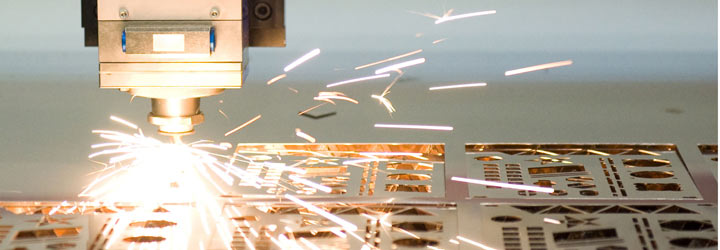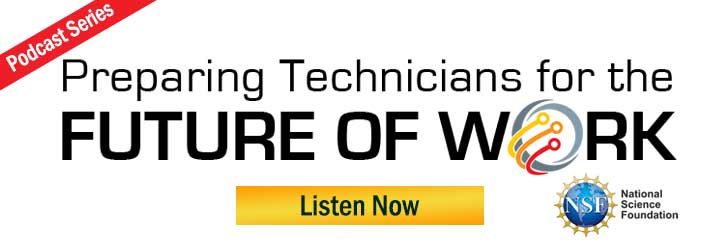If Manufacturing Education Isn’t Focused on Manufacturing, It’s Wasting Time
Developing and supporting a world-class education system for manufacturing, manufacturing technology and production industries in Florida is our primary focus at FLATE. The “preparing work-ready high school and A.S. degree graduates” that can be productive workers in a short time after being hired is a big part of our overarching goal. Then too, developing curricula to accomplish this goal can get tricky because as technology evolves, it is frequently necessary to define new and/or redefine existing manufacturing practices and their encompassing related and enabling manufacturing technologies.
What exactly is manufacturing and what are manufacturing technologies? Starting with a dictionary definition, simply put, manufacturing is the process, or series of processes that takes raw materials and turns them into products. Additionally, manufacturing generally refers to making more than one of a product. However, this definition does include the single crafts person, producing a number of chairs, blankets, jewelry, candles or gadgets to sell, or barter at local famer markets, festivals, or craft/art shows. Sticking to the more traditional concept of a multiple person organization producing multiple copies of a single entity, or a large variety of related products, the need for a set of educated and skilled workers comes into play. To provide that education it is necessary to address two questions. What are these manufacturing processes, and what are some of the technologies that support and/or are part of manufacturing?
Manufacturing processes are combinations of technologies that accomplish the specific tasks involved in creating a sellable product. Over time and with lots of innovative multiple processes have been joined together in automated systems. In manufacturing, where making a product is the sole objective, the following eight production stages are accomplished:
- Conceive and design a product
- Cransform (clean/purify) raw material from a natural state to a product starting state
- Shape the production by either additive or subtractive technologies
- Join various “parts” together
- Clean and finish separate components and the final product
- Test for “functionality” and performance
- Package for safety, marketing, and ease of transportation
- Distribute to markets around the globe
With all of this background information in mind, how do educators “manufacture” at minimal cost and production time, the skilled workforce manufacturers require? For this specific example, we can always begin by writing down all the specific joining steps necessary to make something. In general, this can be done at various levels, but to really understand manufacturing, and all the many steps, multiple technology procedures must be identified and the sequence understood. In addition, although we, as educators, sometimes get annoyed with lengthy “assembly/operation instructions,” these documents are necessary, represent a small window into how manufacturing processes takes place, and define the technical content and skill levels we should include in the manufacturing curriculum we develop. Collectively these activities help us understand a manufacturer’s process and needs, and that is precisely the knowledge base required to create meaningful curricula.
We should continue this conversation with the other seven manufacturing production stages listed above, but, alas, I have already exceeded my allotted FLATE Focus space for this month. In summary, there are many enabling and embedded technologies that are important, but seemingly transparent to the manufacturing process. To develop world class manufacturers requires a world class technical workforce, and that demands a comprehensive and intensive two year A.S. degree support system that addresses the enabling, embedded, and fundamental technologies that encompass manufacturing.
There is a lot to learn and for Florida that learning recipe, the Florida Plan, is clear. Educators need to interact with the manufacturers they service. Manufacturers have to help these educators identify the workforce expectations in each of their eight production stages. The Florida Department of Education has to have the resources to continue their practice of revising state frameworks to include the fundamental skills and knowledge for foundational technologies that are ubiquitous in manufacturing environments. FLATE has to continue to craft and promote its A.S. degree model that defines technical education as an integrated set of foundational skills and knowledge, built on a sound “general education” platform, and topped with specific technology skills and training that are all fused with strategies that promote the student’s critical thinking ability. This recipe for education and training automatically provides a strong background that supports the learning and understanding of emerging technologies that will find their way into manufacturing processes in the future.
Now please take a few moments to catch up on news from FLATE. STEM Puzzle #33 might make your head spin, but as always it will prove worth the effort. I also invite you to help us welcome our new regional BEST robotics hub to Hillsborough Community College in Brandon, encourage you to take a closer look at Gov. Rick Scott’s execution of “manufacturing matters” campaign and top-level engagement with FLATE’s network of partner colleges, experience vicariously all that the engineering expo at USF had to offer, and thank our National Visiting Committee members for their role in advancing manufacturing and technician education and training in the sunshine state. These and much more in this edition of the FLATE Focus!























